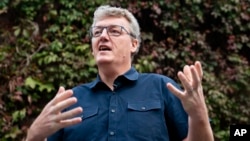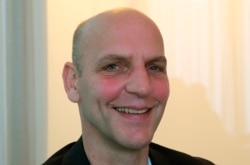The Royal Swedish Academy of Sciences Wednesday awarded the 2021 Nobel Prize in Chemistry to two scientists for their work - independently – in developing a new way of building molecules, a process with applications throughout industry.
Speaking in Stockholm, academy Secretary General Goran Hansson said chemists Benjamin List of Germany’s Max Planck Institute and David MacMillan of Princeton University will split this year’s prize.
In presenting the award, the academy explained the two chemists developed new, organic catalysts to help build molecules.
Catalysts are substances that control and accelerate chemical reactions, without becoming part of the final product, and are essential to constructing molecules for research and industry.
The academy said previously, it was believed there were just two types of catalysts available: metals and enzymes. But over the last 20 years, List and MacMillan, working independently of each other, have developed a third type of catalyst, known as asymmetric organocatalysis.
In the words of the academy, “Organic catalysts have a stable framework of carbon atoms, to which more active chemical groups can attach. These often contain common elements such as oxygen, nitrogen, sulphur or phosphorus. This means that these catalysts are both environmentally friendly and cheap to produce.”
Using these reactions, researchers can build molecules that can form elastic and durable materials, store energy in batteries or inhibit the progression of disease.
The Nobel Prizes for medicine and physics were awarded earlier this week. The prizes for literature, peace and economics to be awarded over the next week.
Some information for this report comes from AP.








